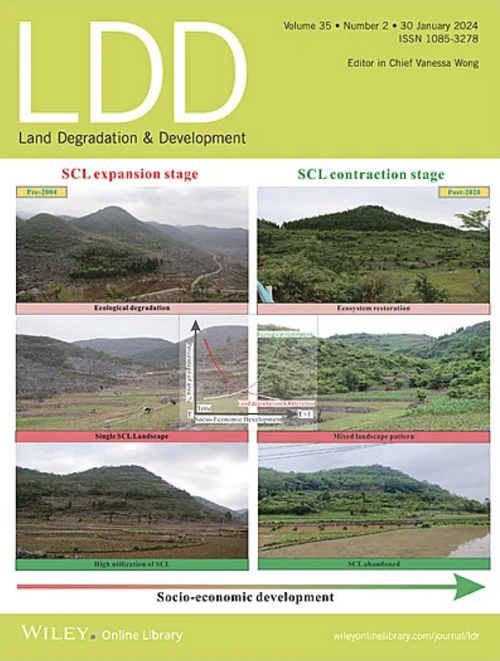Automatic Detection for Cropland Destruction and Reclamation in Coal‐Grain Composite Region Using Long‐Term Landsat Imagery
IF 3.6
2区 农林科学
Q2 ENVIRONMENTAL SCIENCES
引用次数: 0
Abstract
The eastern plains of China are home to numerous “coal‐grain composite regions,” where extensive underground coal mining has led to widespread land subsidence and cropland destruction, profoundly affecting regional ecological environments, agricultural production, and food security. This study proposes an automatic method for detecting cropland destruction and reclamation. The Normalized Difference Vegetation Index (NDVI) derived from long‐term Landsat imagery was selected as the primary factor. First, by extracting a substantial number of NDVI samples from the mining areas, the threshold for cropland destruction due to mining disturbances was determined. Various types and scales of NDVI change templates were constructed based on the mechanisms of cropland disturbance. Subsequently, the Fast Dynamic Time Warping algorithm was employed to match the time‐series curves and identify disturbance types, along with formulating detection rule for the year and magnitude of the cropland disturbance. Finally, patch indicators for disturbed croplands were established, and a random forest model was utilized to eliminate the disturbance noise induced by anthropogenic construction. The proposed method was applied to the Huaibei coal base, mapping cropland destruction and reclamation due to mining activities from 1987 to 2022, with overall accuracies of 0.85 and 0.81, respectively. This study revealed that the total area of cropland destroyed by mining activities amounted to 10179.71 ha during the monitoring period. From 1987 to 2005, the area of cropland destruction was small, accounting for 27.51% of the entire period. Between 2006 and 2018, the area of cropland destruction significantly increased, totaling 6102.01 ha and accounting for 59.94% of the entire period. The area of cropland destruction rapidly decreased and stabilized after 2018. Reclamation efforts began roughly in 1995, achieving a total reclaimed area of 2734.83 ha, with a reclamation rate of 26.86%. This study provides a crucial reference for monitoring the environmental impacts of mining and assessing the effectiveness of ecological restoration.求助全文
约1分钟内获得全文
求助全文
来源期刊

Land Degradation & Development
农林科学-环境科学
CiteScore
7.70
自引率
8.50%
发文量
379
审稿时长
5.5 months
期刊介绍:
Land Degradation & Development is an international journal which seeks to promote rational study of the recognition, monitoring, control and rehabilitation of degradation in terrestrial environments. The journal focuses on:
- what land degradation is;
- what causes land degradation;
- the impacts of land degradation
- the scale of land degradation;
- the history, current status or future trends of land degradation;
- avoidance, mitigation and control of land degradation;
- remedial actions to rehabilitate or restore degraded land;
- sustainable land management.
 求助内容:
求助内容: 应助结果提醒方式:
应助结果提醒方式:


